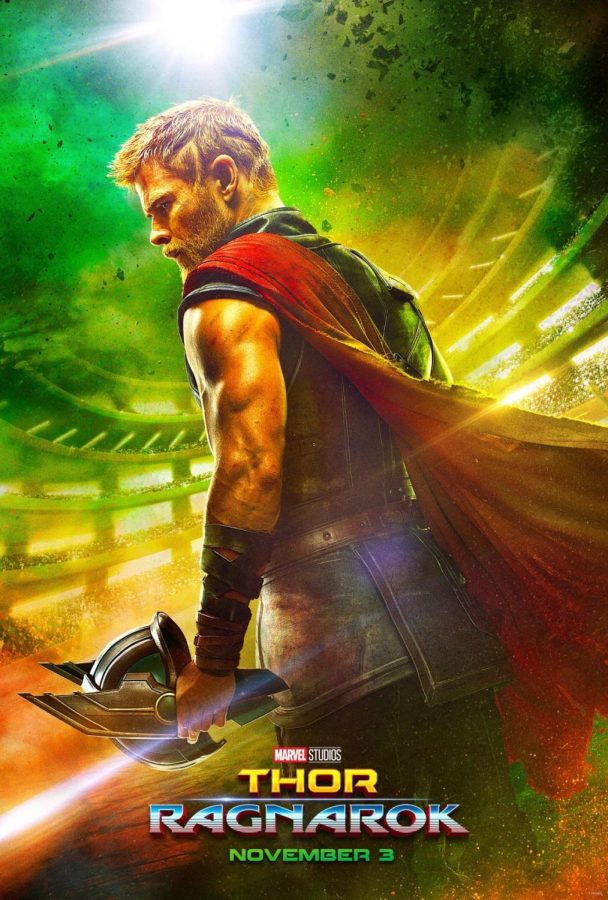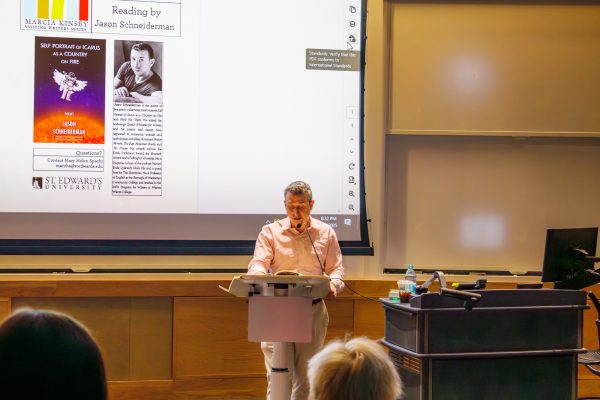Lightning in a Hammer: ‘Thor: Ragnarok’ captures comedy and action of superhero genre
Who would’ve guessed that an indie comedy director from New Zealand was going to produce one of the best big budget superhero movies of the year? In an effort to show growth and change as a director, Taika Waititi proved to the world that any style can mesh with the superhero genre, and that outside voices are beneficial to the heavy handed Marvel Studios’ system.
“Thor: Ragnarok” wastes no time in introducing the world of its protagonist Thor Odinson (Chris Hemsworth) in dire peril. The norse god is forced to battle the goons of the fire demon Surtr (motion captured by Waititi), while Led Zeppelin’s “Immigrant Song” blares. Waititi immediately connects with the larger Marvel Cinematic Universe by doing this, calling to mind “Guardians of the Galaxy” director James Gunn’s use of popular music to infuse mood into his scenes.
The movie then moves at breakneck speed through a plot in which Loki (Tom Hiddleston) and Thor track down their father Odin (Anthony Hopkins), and are thrown onto an alien planet of gladiators and then must battle an ancient evil, Hela (Cate Blanchett), the goddess of death. Waititi is smart in moving quickly through these bigger action sequences, because they’re beats that any superhero movie fan has seen before.
Instead, Waititi lets the film breathe when it focuses on the character of Thor, and how he is continuously broken down and then built up throughout the movie. Thor is focused to mature when Odin dies, as Thor is the perfect person to take the throne of Asgard, due to the fact he doesn’t want it. The film, and to an extent Waititi, looks to prove that leadership should fall to those who have no interest in it, because they will avoid the desire to abuse the position.
“Thor: Ragnarok” also employs an aesthetic that can be likened to the art style of famous Marvel comic book artist Jack Kirby. Kirby was known for his ability to design the out there, crazy cosmic stories that comic fans loved, while also managing to capture many of the essential superhero designs loved by most. The film departs from the usual dull, faded out colors of the usual superhero outing and instead fills the screen with an assaulting amount of color. From the mismatched alien world of Sakaar to the golden Arcadian design of Asgard, the set design of “Thor” and its color palette are what win it the praise.
The film, being the 17th installment of the Marvel Cinematic Universe (MCU), was billed as a direct prelude to the massive film “Avengers: Infinity War,” which will hit theaters in May 2018. While this is true in the case of lining up the character of Thor, giving him new abilities and a cool eye patch, it only speaks true to one or two other characters. The first is Loki, who has been given a chance to redeem himself and has gained possession of an infinity stone; the macguffins that hold extreme cosmic power and significance. The other is Bruce Banner (Mark Ruffalo), and his other form, The Incredible Hulk, who has been fighting in the gladiator pits of Sakaar. Banner was launched into space at the end of “Avengers: Age of Ultron.”
The film’s strongest element, aside of its aesthetic and pacing, is the use of oddball comedy that Waititi is known for. The director is known for his background in indie cult hits, with his New Zealand film “What We Do In the Shadows” having a large following in the United States. The comedy in the film is the soft spoken, referential and perfectly timed joke production that the director has made his living on. This carries over to the film well, and the audience is treated to as many jokes as there are fight scenes throughout the two-hour runtime.
“Thor: Ragnarok” is a film that can be recommended to any type of movie fan. It blends comedy, superheroics and science fiction and fantasy in an engaging and creative way. Waititi manages to capture lightning in the bottle with the film, and creates a work that serves both as an epic stand alone movie and a strong installment in an interconnected universe.







